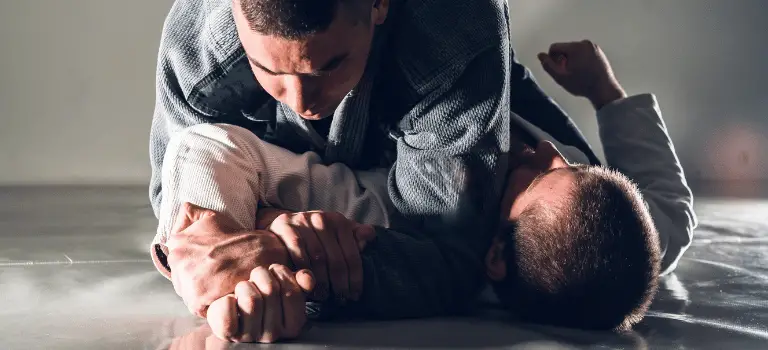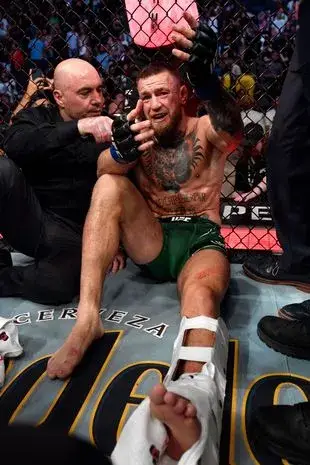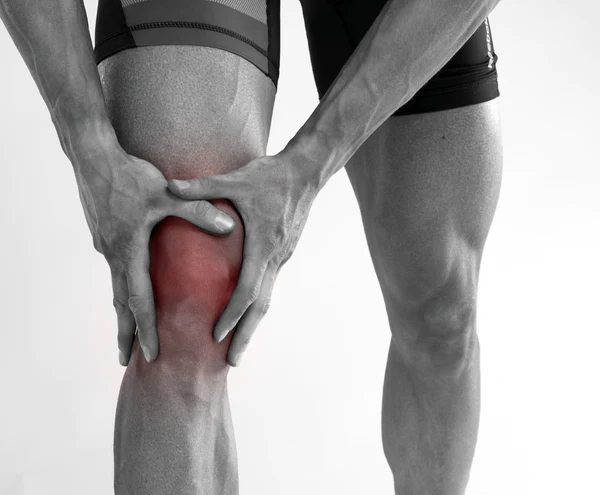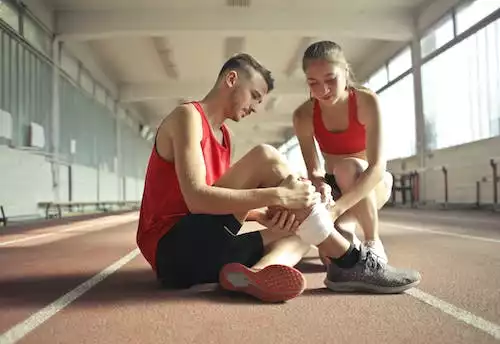Denali Keefe
Table of Contents
Before we dive into this, I must emphasize that I am not a doctor and this is not medical advice. The article that follows is based on research into studies on PTSD, Martial Arts Injuries, and my own experiences in different gyms.
Post-traumatic stress disorder (PTSD) is a significant mental health condition. Several different events can cause PTSD, these include everything from war to a traumatic sports injury.
PTSD Criteria Related to Sports Injuries
PTSD is a real condition outlined by a number of specific criteria. These official criteria are housed in the DSM-5, which can be thought of as the almanac for mental health conditions. Looking ahead I will be highlighting the different criteria that may be more likely to coincide with a training injury.
The following 7 Criteria have been taken from the DSM-5 (American Psychiatric Association. (2013). Diagnostic and statistical manual of mental disorders (5th ed.).
1. “The person was exposed to death, threatened death, actual or threatened serious injury in the following different ways”
-
Direct exposure:
-
This could mean that the injury occurred to the person experiencing symptoms.
-
-
Witnessing the trauma or learning that the trauma happened to someone close:
-
This could mean that the injury occurred to someone nearby the person with symptoms such as a training partner.
-
2. “The traumatic event is persistently re-experienced, in the following way(s)”
-
Unwanted upsetting memories.
-
Nightmares & Flashbacks.
-
Emotional distress after exposure to traumatic reminders | Physical reactivity after exposure to traumatic reminders.
-
This can make it very hard to get back to training as the training injury that caused the distress may have occurred in the gym or dojo, or while training/drilling.
-
3. “Avoidance of trauma-related stimuli after the trauma, in the following way(s)”
-
Trauma-related thoughts or feelings:
-
This can look like avoiding the gym or situations where a person is reminded of their injury.
-
4. “Negative thoughts or feelings that began or worsened after the trauma, in the following way(s)”
-
Inability to recall key features of the trauma:
-
The injured person may not remember getting injured.
-
-
Overly negative thoughts and assumptions about oneself or the world.
-
Exaggerated blame of self or others for causing the trauma:
-
This might look like excessive blame on a training partner or themselves for a lack of injury prevention.
-
-
Negative affect:
-
This can look like someone feeling very down all the time.
-
-
Decreased interest in activities.
-
Feeling isolated.
-
Difficulty experiencing positive affect.
5. “Trauma-related arousal and reactivity that began or worsened after the trauma, in the following way(s)”
-
Irritability or aggression.
-
Risky or destructive behavior.
-
Hypervigilance.
-
Heightened startle reaction.
-
Difficulty concentrating.
-
Difficulty sleeping.
6“Symptoms last for more than 1 month”
To be considered PTSD from sports injury the above symptoms must last more than a month.
7″Symptoms create distress or functional impairment (e.g., social, occupational)”
In the same way as #6, the symptoms mentioned above must impact the injured person’s work or social life.
How Do You Know If You Have PTSD From a Sports Injury
If you have an injury and believe that you may have PTSD from your injury it is critical that you don’t self-diagnose. A diagnosis of PTSD is something that a qualified professional must provide. If you believe that you have the symptoms described above you should make an appointment with your provider and they can help you to get you help.

PTSD From Sports Injuries
When training in contact sports, we understand the risks that we take. Of course, no one wants to get injured, however, certain injuries can lead to more psychological impacts following the injury itself.
It can be quite an arduous task to rehab a torn ACL or a rotator cuff injury, however, most athletes are prepared for this grind. When the injury runs deeper, it can be harder to come back from. An athlete can’t grind their way through the symptoms of PTSD.
When rehabbing from musculoskeletal injuries such as a rotator cuff injury, knee pain, plantar fasciitis, or any other injury there are typically three options. These are rest, physical therapy, or medication. When dealing with a psychological condition such as PTSD it is important to go to a Psychiatrist, Psychologist, or Licensed Counselor.
At the end of the day, most athletes have gotten used to pushing their bodies through grueling workouts and even rehabs, but it’s a new experience when the challenge is psychological. I’m sure that we have all said, “That’ll be fine in a few weeks” and just popped some Advil or other anti-inflammatory medication. This does not work with PTSD.

Knee & Leg Injuries
In my years of training, I have noticed that some of the worst injuries can be in one’s legs and lower legs. In jiu-jitsu, in particular, heel hooks and toe holds can cause some of the most devastating injuries. These knee injuries can include the following:
-
A connective tissue injury
-
A broken bone
-
Torn ACL, MCL, or PCL
-
Plantar fasciitis
-
Partial tears in the meniscus
A current training partner who has recently received his brown belt let me know that when he was a blue belt his training partner incorrectly pulled guard, landing on his knee. He explained that he fully tore his ACL, PCL, and MCL along with his meniscus. This was all due to a simple mistake and too much pressure on his knee. This required extensive surgery, and definitely left him with psychological trauma.
Luckily he was able to get back on the mat and start training again. But this goes to show, that knee and lower leg injuries can most certainly cause the kind of acute pain and mental trauma that can lead to PTSD.
Don't let knee pain rob you of your joy of life. Regain your mobility, freedom, and confidence with our proven rehab program.
- Cost Effective & Convenient Rehab
- Accelerate Recovery Time
- Build back Strength and Mobility

Shoulder & Back Injuries
Martial arts in particular provides hundreds and probably thousands of different ways to tie someone up like a pretzel. This can lead to a ton of different shoulder and back injuries.
The shoulder injuries often come from simple kimura that are taught relatively soon after someone begins training. It is possible to prevent injuries in this part of the body with prehab that strengthens the shoulder. Back injuries on the other hand are less frequent, outside of a muscle spasm or pull, however, when a bad back injury occurs it can be debilitating.
Just like a leg injury, any injury can be traumatic enough to cause PTSD if it has a debilitating impact on the trainee. The only criteria for PTSD are the ones listed at the beginning of this article.
Are you suffering from a sports-related injury? Find an online rehab program to help solve the problem! We have partnered with sports med professionals with love 20 years of experience to provide you with in-class service!
- Online Rehab Programs
- Cost Effective & Convenient
- Connect With Industry Experts

Ankle Injuries
Last, but certainly not least, ankle injuries can be killer. I have torn multiple ligaments in my ankle and it swelled to the size of a softball. While this did not leave me with PTSD, I had a number of psychological symptoms to work through before I could get back to the mats.
Ankle injuries can be very detrimental because they are part of a chain that acts as a shock absorber for the body. Importantly, the criteria for PTSD are listed at the beginning of this article. Something as seemingly innocuous as an ankle injury can have a very traumatic impact on someone.
Supporting Training Partners with PTSD from Sports Injuries
Understanding PTSD from Sports Injuries
PTSD can develop in individuals who have experienced or witnessed a traumatic event, and sports injuries are no exception. Whether it’s a severe concussion, a serious shoulder blade injury, a debilitating ACL tear, or any other injury that threatens an athlete’s career or identity, the psychological effects can be profound. Symptoms of PTSD may include flashbacks, nightmares, anxiety, depression, and avoidance of activities or places associated with the injury.
How to Help Your Training Partner
-
Educate Yourself: Take the time to learn about PTSD and how it manifests specifically in the context of sports injuries. Understanding the symptoms and triggers can help you provide more informed support.
-
Listen Empathetically: Sometimes, all someone needs is a listening ear. The gym is a community and is a great place for people to release some of their frustrations and worries.
-
Respect Boundaries: It’s essential to respect your partner’s boundaries and not push them to discuss their injury or participate in activities that make them uncomfortable. Let them take the lead in their recovery process.
-
Be Patient and Understanding: Recovery from both physical injuries and PTSD takes time. Be patient with your training partner and understand that healing is a gradual process with ups and downs.
-
Seek Professional Help if Needed: If your training partner’s symptoms persist or worsen, encourage them to seek professional help from a therapist or counselor who specializes in trauma and sports psychology.
Supporting a training partner with PTSD from a sports injury requires empathy, patience, and understanding. By educating yourself, creating a safe environment, and offering practical support, you can play a crucial role in their healing journey. Remember that your presence and compassion can make a significant difference in their recovery process. A gym’s community can play a critical role in helping one of its members not only overcome physical challenges but also navigate the emotional hurdles that come with sports injuries.
Conclusion
As we wrap up our discussion, it’s essential to recognize the profound connection between Post-Traumatic Stress Disorder (PTSD) and sports injuries, not just on a clinical level, but also in the everyday conversations within the athletic community.
Think about it: how often do we hear athletes share stories about their injuries? From the initial shock of the incident to the grueling recovery process, these narratives often reflect the emotional rollercoaster that accompanies physical trauma. In these conversations, it becomes evident that the impact of sports injuries extends far beyond the physical realm.
Whether it’s a torn ligament from a heel hook or a concussion from a Tomoe nage gone wrong, the aftermath of such events can linger in an athlete’s psyche, manifesting as symptoms of PTSD. These conversations shed light on the psychological toll that injuries can take, highlighting the need for empathy, support, and understanding within the sports community.
So, next time you’re chatting with a fellow athlete about their injury, consider the psychological impact that an injury can have. Acknowledge the emotional weight that accompanies physical trauma and offer support wherever you can. By fostering open dialogue and cultivating a culture of compassion, we can create a more inclusive and supportive environment for athletes navigating the complex intersection of sports injuries and mental health.
- Mental Health, Recovery
- Recovery, Training
Grapplers Graveyard Email List
Signup for news and special offers only found here at Grapplers Graveyard.
Thank you!
You have successfully joined our subscriber list.



